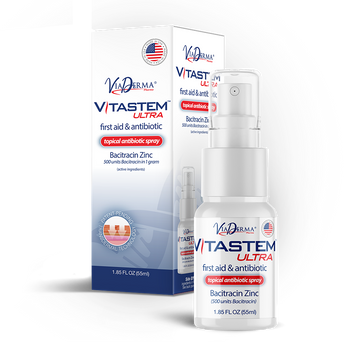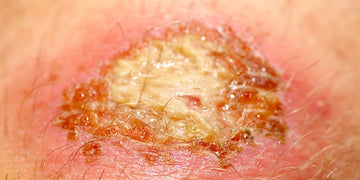cut is a damaged area of one’s skin that is typically the result of some form of trauma. A cut can appear anywhere on a person’s body. 
Cuts can become infected when bacteria enters the wound. The most common symptoms of an infected cut are redness, warmth, swelling, pain, and drainage of pus. The most common cause of infection in cuts is bacteria, such as Staphylococcus aureus and Streptococcus pyogenes. These bacteria are commonly found on the skin and in the nose and can enter a cut or scrape if it is not properly cleaned.
One of the best ways to prevent infection in a cut is to properly clean the wound as soon as possible. This can be done by gently washing the area with soap and water, and then applying an antiseptic solution. Covering the wound with a sterile bandage can also help to keep it clean and protect it from further contamination.
In some cases, a cut may not respond to antibiotics, which are typically used to treat bacterial infections. In these cases, other treatment options such as surgical drainage or wound debridement may be necessary.
If an infected cut is not treated promptly, the infection will begin to spread into the deeper tissues under the skin. This is called cellulitis. The infection can travel through your blood to other parts of your body. Once the infection spreads, you will begin to feel generally unwell and develop a fever.
Cellulitis can develop into a severe infection called sepsis. It’s also possible that an infected cut will never heal properly. It can lead to skin infections such as impetigo, and it can also become an abscess.
In extremely rare cases, an untreated infected cut can develop into necrotising fasciitis. This is more commonly known as the “flesh-eating disease.” It leaves large areas of the skin damaged and painful.
If left untreated, an infected cut can lead to serious complications, such as cellulitis, which is a skin infection that can spread to deeper tissues and organs, and sepsis, which is a potentially life-threatening condition caused by the body’s response to an infection.
Infected cuts can be very serious to your health, especially if not treated on time and correctly. It is very important to take care of cuts quickly and watch out for any signs of infection such as redness, warmth, swelling, pain and/or discharge around the wound. If you are concerned about a cut that does not seem to be healing or appears infected, it is important to seek professional medical attention right away.
If your infected cut is not clearing up at home, then you may need antibiotics prescribed by your doctor.
Some commonly prescribed antibiotics include:
- amoxicillin-clavulanate (Augmentin, Augmentin-Duo)
- trimethoprim-sulfamethoxazole (Bactrim, Septra)
- clindamycin (Cleocin)
- cephalexin (Keflex)
- doxycycline (Doryx)
- dicloxacillin
Although oral antibiotics can be effective at treating infected cuts, they can cause adverse effects and harm your kidneys and/or other organs too.
The doctor will also clean your cut and apply an appropriate dressing. They may use a topical numbing agent before cleaning it to reduce pain. Make sure to monitor your cut closely so that you will quickly notice if there is even the slightest sign of infection. The earlier you catch an infection, the more quickly and easily it can be treated in order to prevent what could result in more serious health complications.
If you or a loved one is suffering from an infected cut, you should ask your doctor if Vitastem Ultra can be a good treatment for healing your infected cut quickly and safely in order to prevent the spread of infection so you can heal fast and get back to living your life fully once again. Vitastem is one of the world’s strongest first aid & topical antibiotics that is proven to be 10x more effective at treating cuts & scrapes, and wounds, while preventing infection.




